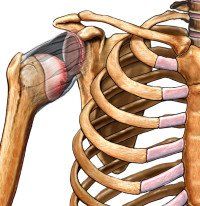Shoulder Instability
The shoulder is a complex structure that provides tremendous strength and range of motion. When working properly, the muscles, tendons, and structures that make up the shoulder region work together to enable a wide range of motions and capabilities we use in sports, at work, and in everyday activities.
Shoulder Instability is a common condition that results when some of the muscles, tendons, or structures that make up the shoulder are not as tight, as strong, or as healthy as they should be, which can restrict the shoulder’s normal range of motion, strength, and/or function. The condition can appear occasionally or chronically, and in traumatic instances it can cause significant limitations in normal activities.
Shoulder instability is commonly identified with pain experienced during activities that require extensive shoulder use. Some people are born with this condition, while others experience instability after extensive repetitive shoulder activity.
In most cases, a comprehensive rehabilitation program that focuses on strengthening the muscles and structures around the shoulder while improving the range of motion will be prescribed by your physician to help stabilize the shoulder and reduce the associated pain.
In more severe cases, the shoulder instability may require surgery to repair the structure, avoid further damage, and improve stability. Following surgery, a comprehensive therapy program will be prescribed to increase range of motion and strength in the region and provide greater stability to the shoulder.
MEDICAL DISCLAIMER: The information contained in this website is intended for informational and educational purposes only. You should always with your physician for the diagnosis and treatment of any injury or condition. The content on this web site is general in nature and not complete, and it should never be used for diagnostic or treatment purposes.
